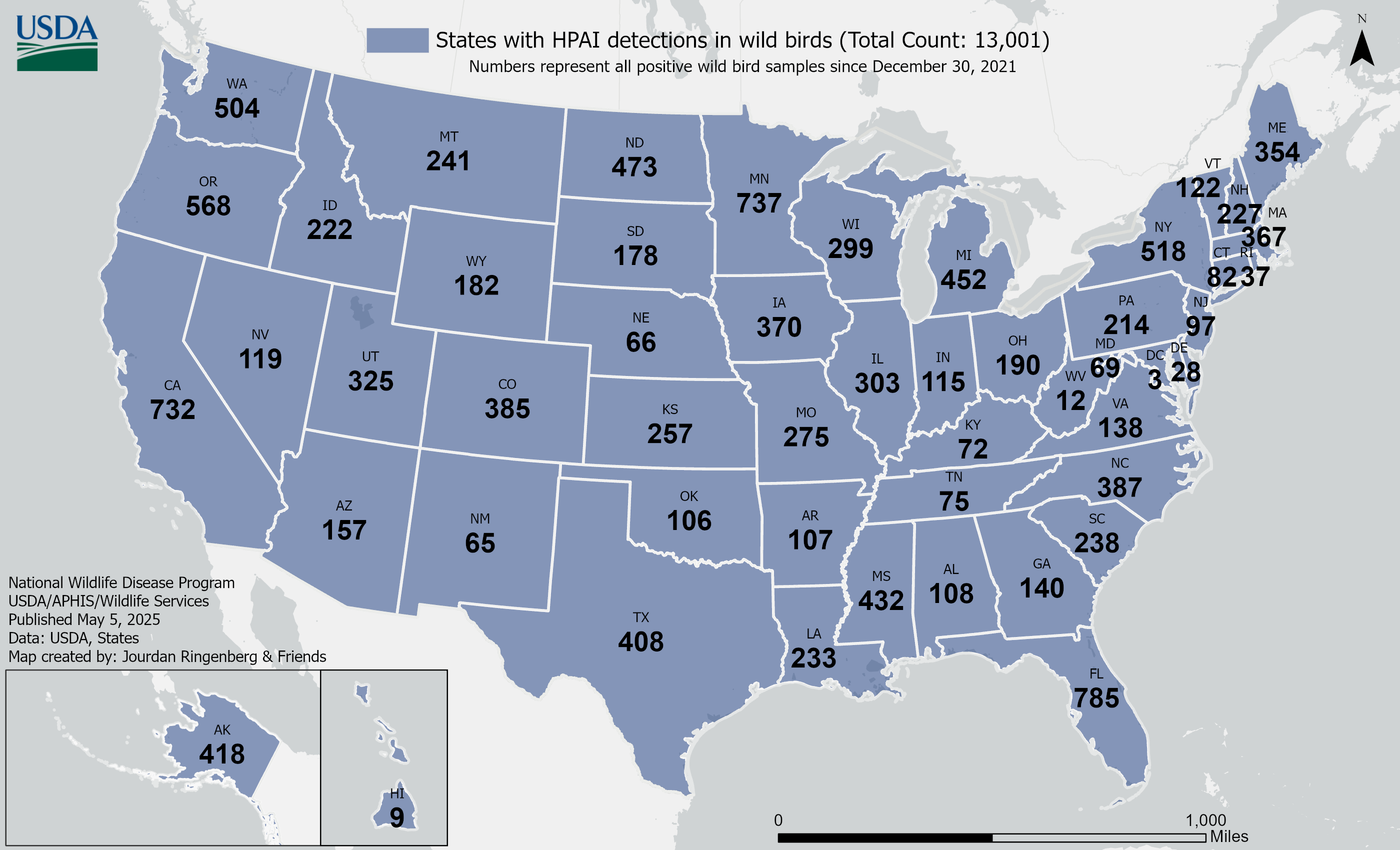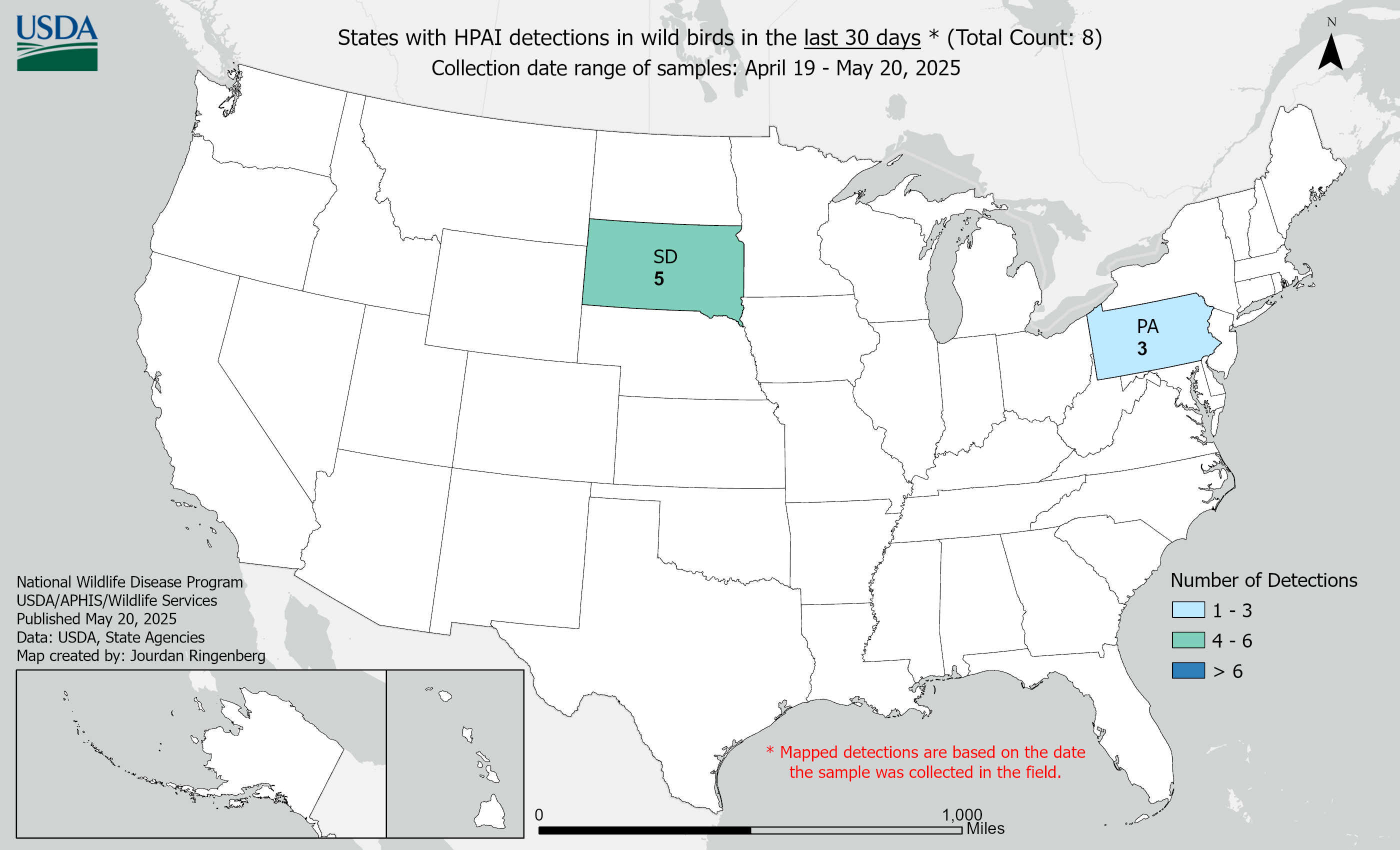Detections of Highly Pathogenic Avian Influenza in Wild Birds
Wild birds can be infected with highly pathogenic avian influenza (HPAI) and show no signs of illness. They can carry the disease to new areas when migrating, potentially exposing domestic poultry to the virus.
APHIS’ wild bird surveillance program provides an early warning system for the introduction and distribution of avian influenza viruses of concern in the United States, allowing APHIS and the poultry industry to take timely and rapid action to reduce the risk of spread to our poultry industry and other populations of concern.
Users may need to refresh the page to see the latest table data. To refresh the page, hold down the SHIFT key and click the Reload Page button in your browser.
About Avian Influenza
Avian influenza is caused by influenza Type A virus (influenza A). Avian-origin influenza viruses are broadly categorized based on a combination of two groups of proteins on the surface of the influenza A virus: hemagglutinin or “H” proteins, of which there are 16 (H1–H16), and neuraminidase or “N” proteins, of which there are 9 (N1–N9). Many different combinations of “H” and “N” proteins are possible. Each combination is considered a different subtype, and related viruses within a subtype may be referred to as a lineage. Avian influenza viruses are classified as either “low pathogenic” or “highly pathogenic” based on their genetic features and the severity of the disease they cause in poultry. Most viruses are of low pathogenicity, meaning they cause no signs or only minor clinical signs of infection in poultry.



